#natural information society
Text
Music is an Essential Verb: Derek Taylor 2023

Music remains, along with family, friends, and a select few venial vices, my primary daily defense against the mental erosions of spiritual malaise and existential dread. Being a humanist also means being a realist, and little looks to be different on that score in the year ahead as we continue to careen toward a bleak and self-defeating dénouement. The veil of uncertainty around what ultimately feels like inevitability redoubles the need to remain thankful for and supportive of those who devote themselves to art. Summary capsules below describe some of the sounds that kept me going in 2023.
Peter Brötzmann, Wayne Shorter, Kidd Jordan, & Charles Gayle

“The trauma of my generation was what our fathers had done to the rest of the world, and so we said, ‘never again,’ and that was the whole impetus through all my life, and it still is.” ~ Brötzmann (2018)
Musician attrition and demise are dispiriting aspects of every annum, but the departure of four disparate octogenarian reedists exacted an especially steep emotional and cultural toll this year. Shorter and Jordan passed away in March, each of them leaving a rich legacy as indefatigable improviser and altruistic educator that continue influence and inspire. Brötzmann exited in June after the return of a protracted respiratory illness. Few if any can match the magnitude of his mileage and six-decade itinerary as an irrepressible, obstinately adventurous world traveler. Gayle ascended in September, an ardent, uncompromising eremite to the end. All four men left behind discographies and concert/interview footage that will leave the faithful and curious listening and marveling in perpetuity, but their collective absence still aches.
Kirk Knuffke & Joe McPhee Quartet + 1 – Keep the Dream Up (Fundacja Sluchaj)
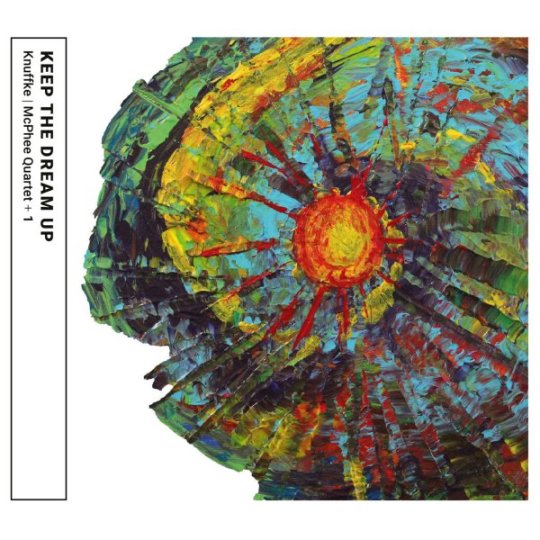
One of the manifold joys of following the output of Kirk Knuffke is anticipating who he’ll collaborate with next. The cornetist’s ears and imagination are as huge as his heart, a trait he has in common with the equally equanimous Joe McPhee. They’ve known each other for years but Keep the Dream Up is their first released collaboration and it’s an affirming alloy of their complementary creative temperaments. Longtime McPhee comrades Michael Bisio and Jay Rosen complete the quartet with bass clarinetist Christof Knoche comprising the additive on a Brooklyn studio session that captures collective creative lightning in a digital bottle. My album of the year for these reasons and more, although hopefully Joe will bring his brass to a follow-up conclave soon.
Don Byas – Classic Sessions 1944-1946 (Mosaic)

Saxophonist Don Byas recorded prolifically during the 1940s. His porous sound and popular style bridged the schools of swing and bop through prowess and panache aligned with the most esteemed of post-WII tone scientists. That sustained industriousness hasn’t reflected in reliable access to his works, primarily because they’re spread across a plethora of independent labels and competing copyrights. Leave it to Mosaic Records to rectify the longstanding reissue lacuna. This long gestating collection corrals and sequences the bulk of them across ten discs, scrubbing their sound, and adding an expansive cache of rarified verité concert recordings made in a Swedish jazz fan’s residence. Indulging in one’s Byas bias has never been easier or as edifying.
Fred Anderson – The Milwaukee Tapes Vol. 2 (Corbett vs Dempsey)
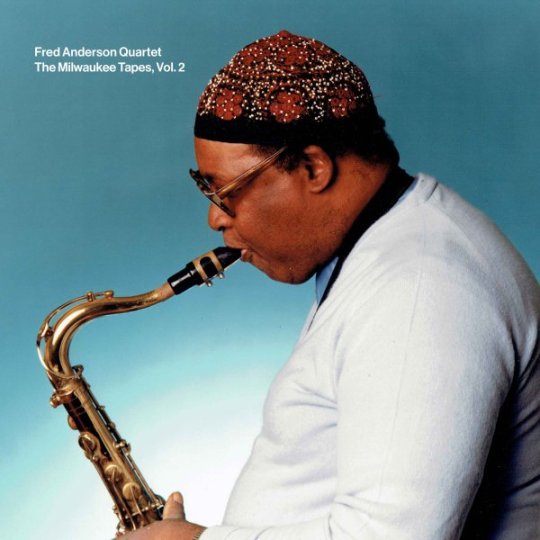
Patience and long-game aptitude are among music producer/archivist/advocate John Corbett’s virtues. This unexpected, but abundantly welcome sequel to an archival Anderson collection on Corbett’s long defunct Unheard Music Series took 23 years to secure commercial circulation and offers an additional hour-plus from the same gig in improved sound. Fellow AACMers Billy Brimfield and Hamid (nee Hank) Drake join bassist Larry Hayrod in bringing vibrant, detailed life to the Lone Prophet of the Prairie’s (as Anderson was affectionately known) serpentine, cerulean melodies. Corbett’s current label released a plenitude of music in 2023 (see also below) but the uncommon opportunity to hear more Anderson of any vintage makes this release worthy of independent mention.
Jason Adasiewicz
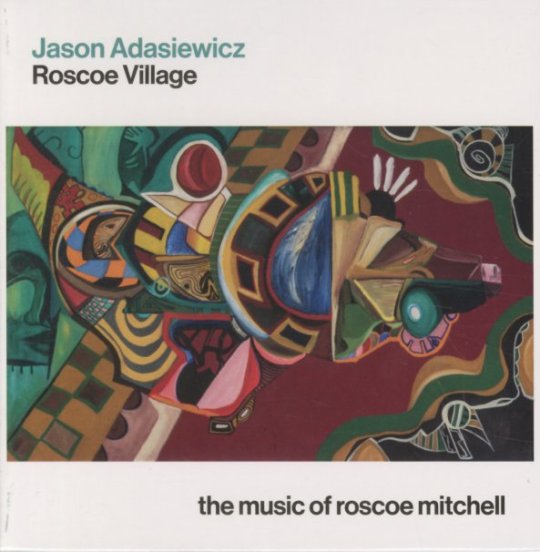
Corbett vs. Dempsey also had a welcome role in Jason Adasiewicz’s return to record with two different projects. On vinyl, Roy’s World documents a 2017 Chicago studio session by the vibraphonist’s quintet originally intended as the soundtrack to a film based on neo-noir novelist Barry Gifford’s short stories. Chicago stalwarts Josh Berman, Joshua Abrams, Hamid Drake, join saxophonist Jonathan Doyle in the ensemble for a program that sounds at once fresh and nostalgic while always vital. On CD, Roscoe’s Village dispenses with band for a solo selective foray through the songbook of Roscoe Mitchell including evocative renderings of “Congliptious” and “A Jackson in Your House” that retain the composer’s essence while striking out in bold new directions.
Natural Information Society

Grounded as it is in core voices of guembri, frame drum and harmonium, codification of Josh Abrams’ NIS as a jazz ensemble immediately feels reductively incomplete. All participating instruments can be active architects in the undulating, melody-laced drones that frequently form the basis of the band’s gradual, granulated improvisations. Performances are more akin to collective expeditions where a galvanizing gestalt effect is afoot; one where earned communal peaks preserve the individual power and agency of the interlocking parts. Since Time is Gravity augments this already catalytic template by incorporating a larger contingent of Chicago colleagues including tenorist Ari Brown to the equation.
Abdul Wadud

A jazz-based improviser on the cello who didn’t double on other stringed instruments, Wadud was also a consummate collaborator and sideman. Magnanimity in lending his substantial talents to the projects of others resulted in a paucity of albums under his own name. By Myself from 1977 on the Bisharra label is a revelatory anomaly on that self-effacing resume. Wadud approaches the instrument as a multifaceted sound factory, plucking, strumming, and bowing, often simultaneously, to create solo tone poems steeped in personal poignancy. Gotta Groove’s vinyl reissue is a beautiful facsimile of the original album object in faithfully reconstructed fidelity.
Marion Brown

Georgia-born altoist Marion Brown had a lengthy, storied career but the body of recorded work that he left behind can present difficulties in terms of ingress to its totality. Scattered across labels, years, and circumstances, much of it is either out of print or commercially unreleased. That collective relative obscurity makes a trio of releases, two on the German Moosicus label, and a third Record Store Day viny reissue of Brown’s 1970 studio duets with Wadada Leo Smith under the shared sobriquet Creative Improvisation Ensemble even more valuable. Of the former two, Mary Ann presents concert material by Brown’s quartet from a 1969 Bremen club gig in soundboard fidelity. Gesprächsfetzen & In Sommerhausen combines two more German concert snapshots, quintet, and sextet, from 1968 & 1969 with Gunter Hampel originally released on the Calig imprint. Steve McCall is a boon on drums in all three contexts.
Art Pepper – Complete Maiden Voyage Recordings (Omnivore)

Art Pepper was an inveterate rake for most of his life, magnifying destructive interpersonal tendencies with drugs and frustratingly frequent acts of self-sabotage. That star-crossed propensity makes the fact that he left so much magnificent music even more miraculous. This lavish box is a fascinating compendium of the constantly competing artistic contradictions at his center, collecting a quartet gig across three nights and seven club sets in Pepper’s native Los Angeles, ten months prior to his premature passing at 56. Over half of the music is previously unreleased and the rhythm section, led by the impeccable and implacable pianistics of George Cables, gives Pepper a cumulative confidence boost that keeps him on the rails. None of it has ever sounded better.
Pan Afrikan People’s Arkestra

Los Angeles of the late-1970s was an unforgiving environment for the economic necessities of orchestral jazz. The Pan Afrikan People’s Arkestra, under the nominal leadership of pianist/composer/community organizer Horace Tapscott, was a tenaciously subversive force in the face of that ruinous rule. Adopting the Immanuel United Church of Christ as an informal base of operations, the large ensemble resourcefully engaged in an ambitious series of concerts in 1979. The Nimbus label, long a Tapscott exponent and repository, released the first three entries this year in an archival subscription series collecting the voluminous results. Titles are also available individually and present the pivotal band at a performative peak with star soloists Sabir Mateen, Billy Harris, Jesse Sharps, and Robert Miranda shining just as bright as their fearless foreman.
Alan Skidmore – A Supreme Love
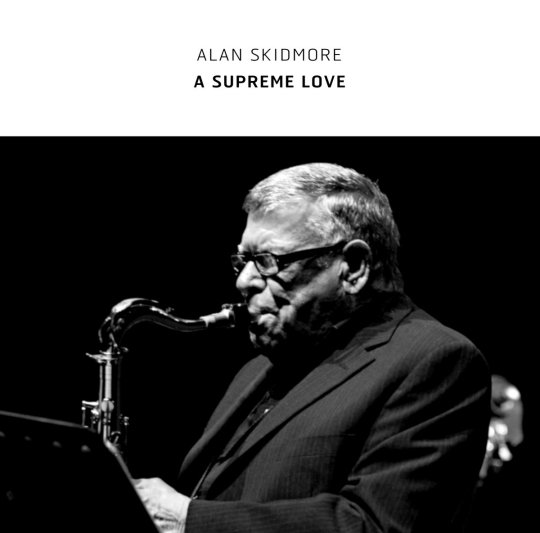
Unexpectedly issued on Mark Wastell’s Confront label, an imprint better known for its fealty to free improvisation, this six-disc archival tribute to Alan Skidmore’s 70+ year career in music launches with the saxophonist’s 1961 radio debut and lands some seven-hours later with his intimate 2019 rendering of John Coltrane’s “Psalm.” The aural expanse between is brimming with bright moments and luminary collaborators the likes of which include Tony Oxley, Kenny Wheeler, Wayne Shorter, Dave Holland, Mike Osborne, Elvin Jones, and another dozen name drops from the top tier of improvised music. It’s a wild, illuminating ride and a sterling example of a musical memorial done right.
The Jazz Doctors – Intensive Care/Prescriptions Filled: The Billy Bang Quartet Sessions 1983/1984 (Cadillac)

Billy Bang and Frank Lowe shared a bottomless fraternal bond forged through parallel traumas internalized in Vietnam and expressed by the subsequent embrace of the restorative power of improvised music. The pair of sessions (one reissued, one archival) collected on this disc epitomize their deep attachment arguably as well as any of their other numerous collaborations. Outside the cardinal duo, the Jazz Doctors never really had a stable lineup, but the quartets here embody two of their best. Both programs are loosely adherent to freebop conventions with violin and tenor saxophone combining over contrabass and drums for a potent front line. Bang and Lowe are long gone now, their shared absence making the availability of this music even more precious.
Attila Zoller & Jimmy Raney
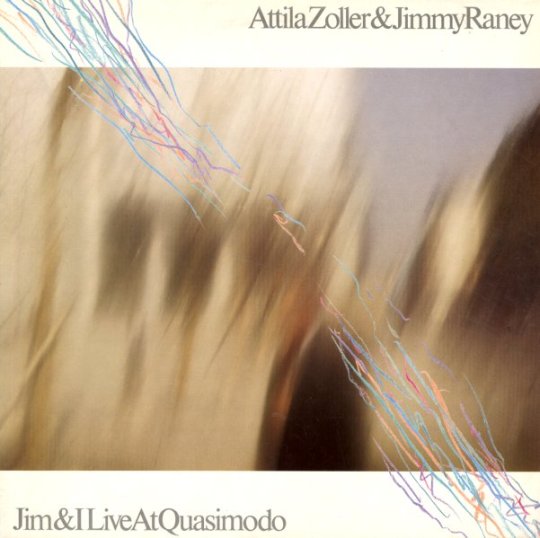
Hungarian guitarist Attila Zoller had selective affinity for other artists on the instrument, so much so that his mid-career period is seeded by fateful encounters with plectrist peers. Most prolific among these partnerships was his prudent pairing with Jimmy Raney. A popular proponent of bop-based jazz, Raney was in a similar exploratory headspace when the two joined forces on a trio of recordings for the German L + R label over a seven-year span. Concert dates from Frankfurt (’80) and Berlin (’86) find the duo spooling out lengthy dialogues that dabble in free improvisation while keeping codified melodies within reach. An earlier New York encounter (’79) explores their rapport in a studio. All three reissues on the Japanese Ultra-Vybe imprint are aces.
Steve Swell’s Fire Into Music
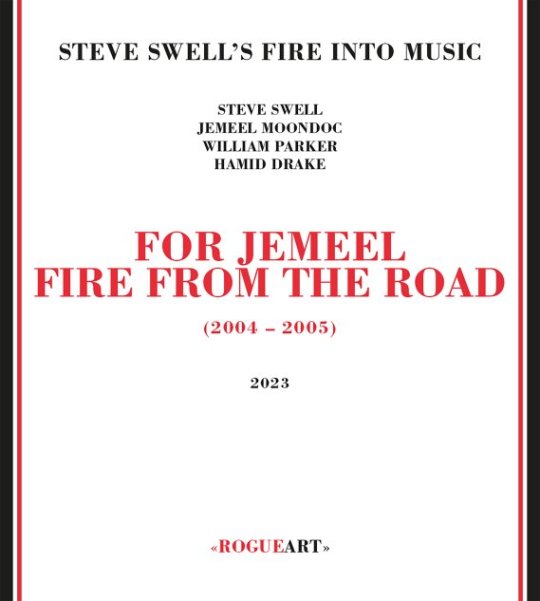
Simultaneously emblematic of NYC free jazz in the early aughts and fiercely dedicated to resisting pitfalls of provincialism by touring generously and rigorously, trombonist Steve Swell’s Fire into Music was one of the finest quartets of its kind. Posthumously dedicated to the late altoist Moondoc, this three CD set collects a trio of small venue concerts by the band from gigs in Texas and Ontario. As with the horns, William Parker and Hamid Drake are ideally suited to the extended, expository freebop safaris that formed the ensemble’s flexible repertoire. Swell’s the leader on paper but sagely embraces musical communalism without fail.
Intakt

Running a physical media imprint in the 21st century is an inherently parlous enterprise, but this steadfast Swiss label continues to evidence how it’s done. This year’s standout catalog entries include Andrew Cyrille’s Music Delivery/Percussion, the octogenarian drummer’s third solo album and first in 45-years; bassist Jöelle Leandré’s solo Zurich Concert; pianist Aruán Ortiz’s Serranías Sketchbook for Piano Trio; Beyond Dragons by the trio of saxophonist Angelika Niescier, cellist Tomeka Reid, and drummer Savannah Harris, and Ohad Talmor’s Back to the Land, a quartet-plus-guests survey that takes its compositional focus an archival workshop date by Ornette Coleman and Lee Konitz.
Ezz-thetics

The appearance of the Swiss Ezz-thetics imprint four years ago raised both eyebrows and ire. Lacking access to master tapes, veteran free jazz and new music producer Werner Uehlinger sourced commercially released editions instead, employing ace audio engineer Peter Pfister succeeded by Michael Brandli to rejuvenate and refurbish the recordings, stateside copyright considerations be damned. Reaction was expeditious and polemical, but proof is in the hearing as most of the label’s dozens of releases sound better than their original incarnations. Catalog highlights this year include another round of Albert Ayler airshots including his pivotal meeting with the Cecil Tayor Trio in 1962 on More Lost Performances, Charles Mingus’ At Antibes 1960, and Ornette Coleman’s At the Golden Circle.
Fresh Sound

Jordi Pujol is akin to Uehlinger in that he refuses to let his vision and ambitions as a producer be abbreviated by external opinion. In Pujol’s case it’s yielded a bountiful inventory of antiquarian titles that rights holders have shown little to zero interest in restoring to begin with. Cases in point for this year include a definitive collection of obscurando saxophonist Boots Mussulli’s works; concert and studio collections by the Count Basie alumni tandem of Al Grey and Billy Mitchell; hens’ teeth rare leader sessions by Arthur Lyman vibraphonist Julius Wechter; and a two-fer of Julliard-trained Ellingtonian Cass Harrison piano trio albums. Exciting guilty pleasures all around.
Playing for the Man at the Door

As complex as he was controversial, Robert “Mack” McCormick deserves consideration in the esteemed company of other maverick cultural archivists like Alan Lomax, George Mitchell, and Harry Smith. With a preservationist purview mostly comprising Texas and bordering states, McCormick spent much of his adult life obsessively documenting and disentangling the cultural capital of the region through recordings, photography, interviews, essays, and research. Smithsonian Folkways became repository for the massive reservoir after his passing and this box is the first in what will hopefully be multiple dispatches from the same. Unreleased field recordings of Mance Lipscomb and Lightnin’ Hopkins represent the big names, but works by the likes of Hop Wilson, Cedell Davis, Robert Shaw, and a handful of others are just as persuasive. Bongo Joe Coleman’s impassioned presidential pitch closing the set will have listeners pining for a time when third party Executive Branch candidacy didn’t seem so fraught.
Joni Mitchell Archives - Vol. 3, The Asylum Years 1972 to 1975

Mitchell’s continuing project corollary to her old friend Neil Young’s analogously exhaustive retrospective enterprise, this third entry in the series finds her 30-something-self further broadening the lens of her art beyond the solo concert music that dominated the first two boxes. There are stirring solitary shows here, too, but it’s the band offerings that prove most revealing, particularly in the company of reedist Tom Scott’s fusion group L.A. Express. James Taylor, Graham Nash, and David Crosby lend contributory hands, and there’s a brief but intriguing collaboration with Young alongside a trove of demos and workshop versions of songs from her first three albums for Asylum.
Martin Davidson

In closing, another memorial. Martin Davidson wasn’t a musician, but European free improvisation as an art and archive would be a fraction of what it is without his copious and enduring work. As steadfast proprietor of the Emanem label he put his resources into musicians whose efforts frequently fell outside the probability of consistent commercial remuneration. Under his aegis, influential improvisers like Steve Lacy, Derek Bailey, Evan Parker, and Paul Rutherford gained robust catalogs alongside other aspiring artists who never garnered even niche cachet. Davidson was a curmudgeon and an anachronism, trusting his ears implicitly, suffering the indignities of inquiries from strangers seeking audience with the hip hop icon who shared the phonetics of his imprint’s name, and advancing the pleasures of physical media well past their purported expiration date. He was also a talented writer, adding invaluable context to his releases through first-person testimony and critique. Martin will be missed.
And as is tradition in this 20th iteration of this year-end exercise, 25 more titles in stochastic order. Thanks to all for reading, and gratitude to Jennifer Kelly for providing the forum and formatting.
Rodrigo Amado’s The Bridge – Beyond the Margins (Trost)
James Brandon Lewis – For Mahalia with Love (Tao Forms)
Henry Threadgill – The Other One (Pi)
Guillermo Gregorio – Two Trios (ESP)
Rob Brown – Oceanic (RogueArt)
Rich Halley Quintet – Fire Within (Pine Eagle)
Milford Graves w/ Arthur Doyle & Hugh Glover – Children of the Forest (Black Editions)
Mike Osborne – Starting Fires: Live at the 100 Club 1970 (British Progressive Jazz)
Jim Hall – Uniquities Vol 1 + 2 (ArtistShare)
Madhuvanti Pal – The Holy Mother (Sublime Frequencies)
V/A – On the Honky Tonk Highway with Augie Meyers & the Texas Re-Cord Company (Bear Family)
Mal Waldron & Terumasa Hino – Reminiscent Suite (Victor/BBE)
Oum Kalsoum – L’Astre D’Orient 1926-1937 (Fremeaux & Associates)
Sonny Rollins w/ the Heikki Sarmanto Trio – Live at Finlandia Hall Helsinki 1972 (Svart)
V/A – Equatoriana: El Universo Paralelo de Polibio Mayorga (Analog Africa)
Evan Parker – NYC 1978 (Relative Pitch)
V/A – If There’s a Hell Below (Numero Group)
John Coltrane – Evenings at the Village Gate (Impulse)
Derek Bailey & Paul Motian – Duo in Concert (Frozen Reeds)
Peter Brötzmann/Fred Van Hove/Han Bennink/Albert Mangelsdorff – Outspan 1 & 2 (FMP/Cien Fuegos)
Hasaan Ibn Ali – Reaching for the Stars: Trios/Duos/Solos (Omnivore)
Mark Dresser – Tines of Change (Pyroclastic)
Steve Millhouse – The Unwinding (Steeplechase)
Myra Melford’s Fire and Water Quintet – Hear the Light Singing (RogueArt)
V/A – Destination Desert: 33 Oriental Rock & Roll Treasures (Bear Family)
#dusted magazine#derek taylor#yearend 2023#Peter Brötzmann#Wayne Shorter#jazz#kidd jordan#charles gayle#kirk knuffle#joe mcphee#don byas#fred anderson#Jason Adasiewicz#natural information society#Abdul Wadud#marion brown#art pepper#Pan Afrikan People’s Arkestra#Alan Skidmore#The jazz doctors#Attila Zoller & Jimmy Raney
15 notes
·
View notes
Photo

Joshua Abrams :: The Aquarium Drunkard Interview
On April 19 of this year Abrams sat for a Zoom call in the Chicago home he shares with his partner Alvarado, backed by one of her signature glowing artworks. Abrams expressed his life’s work with the same reflective purpose and dedication he brings to his art. He discussed his Jewish upbringing, working with The Roots, jamming with Chicago’s finest improvisers and his unparalleled Eremite albums.
8 notes
·
View notes
Text

Every Record I Own - Day 758: Natural Information Society with Evan Parker descension (Out of Our Constrictions)
This is an album highlight of 2021.
I dove in deep after a friend first introduced me to the works of Joshua Abrams and his band Natural Information Society a few years back. I couldn’t get enough of these percussive, hypnotic, long-form compositions that managed to conjure the motorik groove of krautrock, the percolating polyrhythms of Steve Reich, and the organic pulse of Afrobeat. I’m sure Abrams’ list of influences is much richer and more diverse than the handful of things I hear in their music, but even with my limited frame of references, there was something beguiling and exhilarating about his records. I’ve talked about “magic eye” music a bunch in the past--music that acts like those magic eye images from the ‘90s, where if you zoned out to the seemingly non-descript patterns, these three dimensional shapes would slowly rise out of it. Similarly, if you zone out to a Natural Information Society album, you hear these contours on the landscape, and instead of coming across as an endless cycle of syncopated rhythms, you hear this living, breathing, undulating multi-dimensional thing emerge out of the musical design.
Anyhow, I was hooked. I listened to Mandatory Reality a ton back in 2019. Similarly, Simultonality and Joshua Abram’s Natural Information album got a lot of spins around the house. I found myself on a lot of long flights in 2019, and these records helped the mundane passage of time feel rich and textured. My friend described them as the last truly psychedelic band, and I understood his point. You can feel a little unglued from reality when you immerse yourself in these compositions.
descension (Out of Our Constrictions) is a live album featuring European free jazz legend Evan Parker on saxophone, and it adheres to Natural Information Society’s evolving pulsations while allowing Parker’s improvisations to disrupt the pattern. In some ways, it diminishes a little of NIS’s subtle power. You’re less likely to hone in the slight variations in the guimbri, harmonium, and bass clarinet as they lay into a steady groove. But Parker’s contrasting tactics achieve that thing I love in music: where repetition wrestles with chaos. You can still allow yourself to be hypnotized, but there’s this unbridled element that constantly weaves through the order, imbuing it with this sense of freedom and expressiveness.
While it’s overall effect might be a little different from past NIS albums, descension (Out of Our Constrictions) is still a magical trance-inducing ride.
3 notes
·
View notes
Audio
Listen to: Stigmergy by Natural Information Society
1 note
·
View note
Text
youtube
Natural Information Society - “Stigmergy”
1 note
·
View note
Text
Starts and Moves, 2023/05/20-2023/05/26
clone the living!
There was a tweet or something that I saw a while back— no, I don’t remember when, my sense of time is destroyed, and no it wasn’t a meme, it had not reached that density of repetition— shouting out various flavors and genres of queer people, ending with “trans masc skaters, how’s it feel to be god’s favorite?”. Right now, I can say with confidence that it feels pretty fucking good. The genocidal…
View On WordPress
#Heavy Rotation#James Ellis Ford#music discovery#Natural Information Society#new music#now listening#Sleepwalk#Starts and Moves#streaming#Washer
0 notes
Photo

Lisa Alvarado - Vibratory Cartography: Nepantla (used as cover art for Natural Information Society‘s Since Time Is Gravity)
1 note
·
View note
Photo

Natural Information Society: Stigmergy
Natural Information Society—an ensemble led by avant-garde composer and musician Joshua Abrams—is poised to release Since Time Is Gravity next month, and from it shares the 13-minute “Stigmergy.” The mesmerizing, sprawling piece of music blends jazz with psychedelic elements and an otherworldly feeling. Meditative and hypnotic, the track is “an ensemble ostinato orbiting an Ace Tone Rhythm Ace refracted through Echoplex, dedicated to Arkestra pioneers …
https://coolhunting.com/culture/natural-information-society-stigmergy/
#Culture#Experimental#Jazz#Joshua Abrams#ListenUp#Music#Natural Information Society#Katie Olsen#COOL HUNTING®
0 notes
Text
Modern crystal healing: It opens your ~chakras~ you will attract ~abundance~ you will ~connect with the universe~
Medieval crystal healing: This shit makes you invisible, stops your periods from hurting, and makes your husband love you.
#chatter#Yes those are all taken from real medieval descriptions of crystals.#I can't remember the last one but the first two are topaz and carnelian.#I prefer older crystal healing sources I will not lie.#Its the fact that they're less vague and more confident about their assumptions.#I have read modern (70s) crystal healing books and they are INCOMPREHENSIBLE.#The thing about these books from the 70s is that if you follow the citation chain of modern books they all lead back to them.#I don't know how you could get any useful information from Healing “diamonds are so strong they cause cancer” Stoned.#Want medieval rock information?#Hildegarde von Bingen's Physica and Albert the Great's De Mineralibus.#English translations: Priscilla Throop and Dorothy Wyckoff respectively because I've read those.#Physica includes a lot more than crystals and Throop's translation is easy to read so I recommend it in general.#Wyckoff's De Mineralibus contains a lot of interesting footnotes that explain what Albert could've been referring to.#Because shockingly in a society without ways to definitively test minerals sometimes every green rock is an emerald.#Bonus: Want some Roman crystal knowledge? Pliny the Elder's Natural History volume 11.#||#witch#witchblr#witch memes#witchcraft#crystal witch#crystals#witch meme
229 notes
·
View notes
Text
Dusted Mid-Year 2023, Part Two

Yo La Tengo
And we’re back with the second half of the alphabet—from Kookei to Yves Tumor. If you missed it, check out part one here. We’ll have the writers’ lists tomorrow.
Kookei — The Incredible Hulk (H$G Studios)
youtube
Who picked it? Ray Garraty
Did we review it? No
Tim Clarke’s take:
Detroit rapper Kookei has a truly bizarre rapping style. He delivers almost everything in a hushed whisper, as if he’s right there inside your earbuds, sibilance sizzling, braggadocio booming. Though Kookei rarely wavers from this vocal approach, the production across The Incredible Hulk varies wildly in consistency and quality. Trap beats, synth stabs and rudimentary piano loops dominate the backing tracks, with cuts such as “Jackie Chan” sounding much more rich and polished, while others such as “Cousin Skeeter” and “Headshot Gang 2” bleed into the red, making for some wince-worthy distortion. Admittedly this stuff is no doubt supposed to be heard loud while high as a kite, so I can’t say I’ve been able to fully appreciate its intended effect.
Kali Malone — Does Spring Hide its Joy (Ideologic Organ)
Does Spring Hide Its Joy by Kali Malone (featuring Stephen O’Malley & Lucy Railton)
Who nominated it? Jason Bivins
Did we review it? No
Andrew Forell’s take:
At three hours in duration, Swedish composer Kali Malone’s latest long form composition seems a daunting proposition. Based on Malone’s tuned sine wave generators, Stephen O’Malley’s guitar and Lucy Railton’s cello, Does Spring Hide Its Joy is an extraordinarily rewarding experience. Within the elemental drones, Malone conjures tectonic movement both sweeping and incremental. Microtonal changes feel enormous, the glacial pace focuses the ear on every imperceptible progression, every movement of bow across string and the shimmering harmonic interaction between the instruments. Recorded in early 2020, Does Spring Hide Its Joy reflects those early days of the pandemic when time seemed at a standstill and lethargy, dread and inertia slithered their way in. Three years on, this music resonates with the ongoing effects of those upheavals. All the terrible beauty is here and if you have the time to concentrate, Kali Malone and her collaborators provide a cavernous space in which to process. Very highly recommended and thank you to Jason for the impetus to listen.
Natural Information Society — Since Time is Gravity (Eremite)
youtube
Who Picked it? Bill Meyer
Did we review it? Yes, Christian Carey said, “Whether the new collaborators will remain, or other players will join Abrams, Since Time is Gravity demonstrates that Natural Information Society is a durable creative enterprise.”
Bryon Hayes’ take:
Most of us at Dusted love Natural Information Society, and with good reason: Joshua Abrams and his ever-evolving ensemble know how to concoct a hypnotic brew. As such, it’s no surprise that this record made it to the top of someone’s list this year. If you were lucky enough to catch the latest incarnation of the group – swollen in ranks and named Natural Information Society Community Ensemble with Ari Brown – play live in 2022, you’d have an idea of what’s in store for you on Since Time is Gravity. Even though they might not have been playing this particular material, the large ensemble interplay featured here was definitely on display in the live setting, as was Ari Brown’s crafty soloing. It’s prudent to note that the songs are shorter in comparison to the marathon that was Descension (Out of Our Constrictions), but this is great because as a listener you get to follow the group along a variety of pathways. It will be interesting to see where Abrams takes Natural Information Society next, but you can be sure of one thing: we at Dusted will love it.
Pile — All Fiction (Exploding in Sound)
All Fiction by Pile
Who picked it? Patrick Masterson
Did we review it? Yes, Patrick said, “All Fiction furthers that thinking, another reason this feels less like a leap and more like a carefully considered step toward further Piledom — the band’s flowing, peripatetic nature makes writing about individual songs less important than considering the whole.”
Ray Garraty’s take:
All Fiction is anemic enough to ask yourself: do they eat enough? Rick Maguire’s voice here sounds like he could use more nutrients and proteins in his diet. He kind of wakes up on some tracks, like “Poisons,” yet core of the album is that sad, melancholic material disillusioned middle-aged men write. It’s Radiohead-ish, it’s rock-ish and it’s… just flat? If it’s really what fiction is these days, I better stick with nonfiction.
The Reds, Pinks and Purples — The Town That Cursed Your Name (Slumberland Records)
The Town That Cursed Your Name by The Reds, Pinks & Purples
Who recommended it? Christian Carey
Did we review it? Yes; Jennifer Kelly wrote, “Glenn Donaldson puts a louder, fuzzier attack behind his gossamer-wistful songs this time, amping up the volume for a set of darker, more desolate tunes.”
Jonathan Shaw’s take:
It seems to me that Pitchfork gets something right about the Reds, Pinks and Purples: Jude Noel’s review of The Town That Cursed Your Name notes, amid a breathlessly positive assessment, that the band’s records “simply pick up where the last left off, like a series of Moleskines filled end to end.” That may be so, and the consistency of Glenn Donaldson’s songcraft likely provides a good deal of the band’s appeal—but do you really want to spend time reading a batch of someone else’s Moleskines? The Whole Foods grocery lists and the snatches of wood-shopped poetry and the paragraphs of winsome repining? If so, check out “Almost Changed,” the ninth track on The Town That Cursed Your Name, which doesn’t quite brood and doesn’t quite whine and doesn’t really seem interested in making anything change in the first place. To be fair, it’s very, very hard to find fault with this record’s compositions, the rhymes and the musicianship, which are like a May breeze, a Monet pastel or a warm cup of ginger tea—or all three at once, in someone’s comfy suburban sunroom. If that’s your situation, maybe you don’t want (or need) much of anything to change. Must be nice. Here and there, The Town That Cursed Your Name stirs from its state of cloudless repose to threaten some fuss. “What Is a Friend?” picks up the pace and thrums and hums with something like urgency. Then Donaldson sings: “Dodged your call from the jail / No birthday card in the mail, I always fail / Maybe you lost the plot / You could have offered an opening slot, it’s food for thought.” The inside-baseball, indie-rock vernacular and the literate metaphors dominate the record’s lyrical register. They are always clever and inevitably build an emotional tone best described as precious mopery. The music of the Reds, Pinks and Purples is pretty and precise, and it winces when the world gets ugly. Unfortunately, it’s an ugly world.
Cécile McLorin Salvant—Melusine (Nonesuch)
Mélusine by Cecile McLorin Salvant
Who nominated it? Jason Bivins
Did we review it? No
Bill Meyer’s take:
Cécile McLorin Salvant isn’t exactly beyond my ken. If, like me, you spend time reading and writing for jazz publications, her name and striking taste in eyewear are inescapable. However, having caught her some years back at the Chicago Jazz Festival, I was under the impression that she was a skilled but hardly innovative jazz singer, so I haven’t been trying to keep up. On a formal level, Melusine wipes the floor with that misconception. The material, which consists of original songs sung mostly in French and much older ones sourced from Francophone-adjacent cultures, is certainly not standard. Subtle production touches situate this recording in the 21st century without lapsing into pop pandering. And her singing, which is both technically unassailable and emotionally communicative, transcends any linguistic barriers. There’s a lot to appreciate here; thanks for the tip, Jason.
Tacoma Park — Tacoma Park (self released)
Tacoma Park by Tacoma Park
Who picked it? Ian Mathers
Did we review it? Yes, Ian wrote, “Tacoma Park manages the always-difficult feat of simultaneously reading as the heady product of multiple creative minds in deep conversation and yet fluid and confident enough in its own voice that the result still registers as singular.”
Tim Clarke’s take:
This self-titled duo recording by John Harrison and Ben Felton documents a fruitful pandemic collaboration, overflowing with possibility. With each track built around a handful of rhythmic and melodic ideas, the music is given plenty of air to breathe, plenty of time to evolve. Fingerpicked acoustic guitar and arpeggiated synths dominate the palette, then there’s some drums here and there, both live kit and electronic. At 68 minutes, Tacoma Park is a long record that meanders a fair bit, but it feels like it reaches an apex of sorts with “Circles As A Path As A Valley,” a nearly eight-minute exercise in cathartic layering. Beyond that point, drum-machine-driven tracks such as “We Lost Our Place, We Started Over” and “I Left My Wallet in the 90s” (great title) feel like starting points for another project entirely, or a postscript pointing towards recordings to come.
Tørrfall — Tørrfall (Den Pene Inngang)
Tørrfall by Tørrfall
Who picked it? Ian Mathers
Did we review it? Yes. Ian wrote, “If there’s intoxication here, it’s the post-panic euphoria of a body running out of air; and if this is water music, it’s for currents deep enough they’ve forgotten what the waves are, if they ever knew.”
Patrick Masterson’s take:
In a way, I’m tor[r]n. Tørrfall’s “psychedelic water music” can at times feel languid and flowing as water is, so I see where both the band and Ian are coming from — but what I hear more over these four songs that all clock in between nine and 13 minutes is an alien drone, something elemental but not necessarily earthen. The key to that otherworldliness is Nils Erga’s synthesizer work and wordless vocals: Hovering like a UFO over the rubbery, at times counterintuitive basslines of Kristoffer Riis and Thore Warland’s rainshower percussion, Erga graces these tracks with an omnipresent ethereality that suggests terrain not entirely our own. The music can’t help but follow: Not quite jazz, not quite krautrock, not quite drone, not quite house or techno, Tørrfall skirts the fringes of each to make an entrancing, immersive sonic universe (calling it a mere world feels insufficient) all its own that, headphones or speakers, the louder you play it, the more unsettling it gets. I can’t imagine how these guys must translate live.
Wound Man — Human Outline (Iron Lung)
Human Outline by Wound Man
Who nominated it? Jonathan Shaw
Did we review it? Yes, Jonathan wrote, “The whole record is a barely contained bundle of nerves, electric, hardened, threatening to come completely undone. For those of us walking around in twenty-first-century cities full of anger, suffering and insanity, Human Outline feels infuriatingly apt, mad and full of madness. It’s a terrific record.”
Jennifer Kelly’s take:
In his review, Jon spends a fair amount of time considering which metal subgenre Wound Man belongs to, a subject that I can contribute exactly nothing to. I can say, however, that Wound Man grips and ravages, at slow speeds and fast ones. I like the blistered assaults of “Leashed,” mad forward surges of rabid energy that hurtle forward at mouth-foaming speed, then pull back abruptly, as if on a choke chain. “Punisher” does exactly what the title implies, disintegrating guitar tone into buzzing aggression with sheer force of speed and volume. These cuts are over before they get started—the title track, for instance, is 40 seconds long—but you’ll feel the impact in your gut and ear canal long afterwards.
Yo La Tengo — This Stupid World (Matador)
This Stupid World by Yo La Tengo
Who picked it? Bryon Hayes
Did we review it? Yes. Tim Clarke said of the closing track that it’s "a searingly emotional purge and soothing balm all rolled in one.”
Ian’s take:
These assignments really are actually selected randomly (there are slips of paper and everything!) but it so happens that not only was I already enjoying This Stupid World but that Bryon and I wound up representing Dusted’s Canadian wing at the Toronto stop of YLT’s tour for this record. We had tickets before I got selected to cover it here, even! As a moderate fan of the band (love some classic albums of theirs, have been sorta half-paying-attention to the new stuff for a while now), this is actually the first time I’ve really sat down and engaged with a new Yo La Tengo record in years. That means I can’t really compare it to the last couple, but it feels like I picked a good time to check back in. That closing track, “Miles Away,” might be my favorite song of theirs plus or minus a “Night Falls on Hoboken” (perhaps unsurprisingly, there’s some overlap in vibes there), but overall this is a packed and consistently great 48 minutes. The skronky ones go for it, the gentle ones do in fact soothe, and the deadpan yo-yo tricks on James McNew showcase “Tonight’s Episode” tickled me. To still make records as good as Painful, nearly 30 years after they made Painful? That’s a significant achievement.
Yves Tumor — Praise a Lord Who Chews But Which Does Not Consume; (Or Simply, Hot Between Worlds) (Warp)
youtube
Who nominated it? Patrick Masterton
Did we review it? No
Andrew Forell’s take:
Having been peripherally aware of Yves Tumor I was excited to hear Praise a Lord..., and when it hits it’s very good with Tumor coming on like a latter-day Prince. Their combination of alternative guitars, courtesy of producer Alan Moulder and swaggering RnB is compelling. “God is a Circle,” “Lovely Sewer” and “Operator” have a real edge and a sense of transgressive danger, but other tracks are weighed down by the everything-including-the-kitchen-sink operatics that plague Kevin Barnes’ most indulgent moments with of Montreal. Having said that, this is a really enjoyable, immaculate sounding record and you can’t help but be won over by Tumor’s charismatic performance and their willingness to take risks.
#dusted magazine#midyear#midyear 2023#kookei#ray garraty#tim clarke#kali malone#jason bivins#andrew forell#natural information society#bill meyer#christian carey#bryon hayes#pile#patrick masterson#reds pinks and purples#jonathan shaw#cecile mclorin salvant#tacoma park#ian mathers#Tørrfall#wound man#yo la tengo#yves tumor
12 notes
·
View notes
Text
2.1 Penacony Spoilers!

I know the scene after Ratio's "betrayal" can be read a lot of ways but I am shocked I haven't seen more people interpret it as Ratio being so worried about Aventurine that he couldn't stay away even though he was supposed to.
We know:
1) Ratio absolutely knew Aventurine's plan from start to finish, both his gamble to create "death" in the dream and with the three cornerstones. (Wish people would stop underselling Ratio in their analyses; "Three chips are enough" is a direct enough clue that, genius as he is, Ratio would never miss.)


2) In his own words, Ratio was acting according to Aventurine's instructions while in Dewlight Pavilion and with Sunday and felt that he did a good job not giving them away.

I think most people are on the same page up to there, but then I've seen a lot of people interpreting this scene after Aventurine leaves Sunday's mansion as Aventurine being genuinely angry at Ratio (possibly after having gaslit himself into thinking Ratio was actually betraying him).
But this doesn't make much sense to me because:
1) Ratio actually has nothing to gain by selling Aventurine out to Sunday. They're on the same side in this mission. Information about a Stelleron on Penacony wouldn't be news anyone with a brain like Ratio's and why would he need someone else's research on Stellerons when he already has ties to the Genius Society through Screwllum and Herta, as well as the Astral Express where the Trailblazer is actively housing a Stelleron?

2) One of Aventurine's most notable lines of dialogue is how it's perfectly fine and expected for "friends" to use each other and backstab. This is his default understanding of partners--why would he suddenly be mad about something he expected from the start?

3) If the betrayal wasn't already planned and was just a possibility based on Aventurine's understanding of Ratio, why would he ever have revealed there were "three chips" (aka three cornerstones) in play? If even the betrayal over Topaz's stone wasn't planned, just assumed, why would Aventurine reveal the existence of the third stone? He would gain nothing from doing so.
Instead, I think it makes a lot more sense to interpret Aventurine's frustration with Ratio in this later scene as annoyance over Ratio taking an "unnecessary" risk:
1) As far as Sunday knows, Ratio had just very seriously betrayed Aventurine, completely selling him out and essentially sending him to his execution.
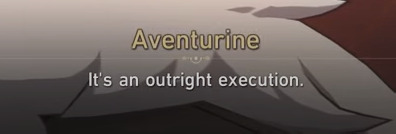
2) In the scene afterward, Aventurine is out in public in the middle of Penacony where The Family's eyes are always watching, yet Ratio walks right up to him to check on him. Why would someone who just sold you out come up to you immediately afterward to check on your health?!

3) It's only natural that Aventurine would pump the brakes and go "Wow, didn't think you'd show yourself after you just betrayed me, remember?" Because that's the act they are supposed to be keeping up! They're still being monitored; it's not safe to break character!

But Ratio is a genius, right, so why would he break character here? From the standpoint of the ploy itself, revealing to the Family that he and Aventurine were still on the same side would only jeopardize the plan, not help it.
The logical explanation, then, is that Ratio went to Aventurine here because he felt like he had to.
He had to check in and make sure the situation was still under Aventurine's control.

(In fact, the entire exchange through the middle of this scene is Aventurine and Ratio confirming the rest of their plot in a veiled manner: Ratio brings up the plan and mentions what's concealed in the gift money bag, Aventurine confirms the cornerstone is good to go; Ratio asks what his next step will be; Aventurine says he's going to do the insane thing of handing out cash while looking pathetic [aka fishing for Sparkle]. Ratio essentially asks if he's crazy enough to take the final gamble with his own life, which Aventurine confirms, and then Ratio sets them up for the finale by gifting him the doctor's note.)

Ratio was willing to risk ruining their entire plan--something Aventurine does seem to be frustrated about at first--just to ensure Aventurine still felt all right about the situation.
He needed to deliver his note demanding Aventurine stay alive.
He needed to tell Aventurine to come to him if the situation got too painful to bear.
In short, Ratio was worried enough that he could not stay away even though, for the sake of their plot, it would have made significantly more sense for him not to appear. The gain of breaking character was worth more to him than the risk of being caught.
You honestly don't even have to take this in a shipping context. The real point here is that Ratio is an incredibly good person who wasn't okay with Aventurine's self-sacrificial plan and who felt morally compelled to check on a person in pain. He's a healer through and through, and ignoring Aventurine in this condition--ignoring someone who was taking so much risk on themselves--simply wasn't possible for him, no matter the danger it posed to the plan.
But for those who do ship Ratio and Aventurine... I hope more people will come to see this scene as another example of Ratio's genuine concern for his mission partner! He did not have to appear here at all; it would have made much more sense for him to leave Aventurine to his own devices to uphold the illusion of their "betrayal." He showed up in this scene--very likely against Aventurine's expectations--because he was concerned for Aventurine's situation and wanted to ensure Aventurine knew he could fall back on Ratio's support at any time if the plan went awry.

tl;dr: I wish people would stop interpreting this scene as the aftermath of a betrayal. Aventurine wasn't ticked off with Ratio in this scene because he felt like he'd genuinely been backstabbed; he was ticked off because Ratio was literally breaking their pre-established "betrayer" character just to be fussy over Aventurine's safety and well-being. (Okay, and to double check on the plan, but let's be real, the first part was definitely more important. 👌)
#honkai star rail#aventurine#dr. ratio#ratiorine#aventio#dr ratio x aventurine#I'M JUST SAYING#when you betray someone you don't check on them five minutes later!!#Dr. Ratio is a genius#he knows this#but he showed up anyway#Aventurine is over here sweating bullets like#'My dude WHY are you here GO AWAY we are acting like ENEMIES today'#and Ratio was just like 'Okay but do you NEED me?'#'Because I am here for you in case that needed to be clarified'#like 'Just want to make sure we're 100% clear'#'I AM HERE FOR YOU IDIOT'#Aventurine being shown a modicum of care: 'Disgusting.'#2.1 spoilers#penacony spoilers
1K notes
·
View notes
Audio
Listen/purchase: Since Time Is Gravity by Natural Information Society
0 notes
Text
I know they’re probably not going to go into this (which i understand, there’s only so much time in an episode and they’re telling a different story) but I think about Al’s background a LOT. Get ready if ur in the mood for a read.

To be a mixed Black person in America is a…bizarre experience. You come to realize that due to the coincidence of your genetic makeup, white folks may divulge information that they keep so closely guarded from the ears of “more obvious-looking” black folks. Im gonna bring it back to Alastor, but lemme give some personal context. I’m mixed with Filipino, so I’m pretty obviously not white, yet my ambiguous ethnic makeup in a predominantly white suburbia seemed to make white peers and people feel much more at ease in relaying their criticisms or prejudices of black people to me. I would hear someone feel comfy enough to spew vitriolic racist shit with me, then toe the line like a circus acrobat when around someone a few shades darker in skin tone and a few coils curlier in hair texture. It was constantly infuriating and holding my tongue was a practice to both investigate someone’s true nature and preserve my own safety. I did abandon that method of navigating life in America, and experienced the switch-up white folks made when I started ‘broadcasting’ my blackness. (E.G. beyonce pre vs. post Lemonade). The criticisms and prejudice confessions just came less often, til I saw them being caged up completely after white peers experienced backlash from me. After they realized “OH this bitch is a n*****!?”
Now this is from someone who is brown, but i also wanna talk about my white-passing cousin with a similar racial makeup as Al, who is from the south and oh BOY. (Let’s call him J for this post’s purposes). J’s navigation though simple daily life is such a constant contradictory experience, of which he is still working through in therapy. I think of one moment when he was manager at retail gig and his boss told him that whenever a Black customer enters, it’s policy to give them “exceptionally attentive customer service”. Essentially, “follow that n***** around”. This is just one modern incident of when J would hear the quiet part out loud, despite his Blackness, because his appearance was white enough to make white folks drop their guard. Eventually, my cousin and I took to the same direction where we used our advantage of disarming white folks against them when the time came. We would keep note and record of racism and unlock a sort of “this you?” when the opportunity to expose that person’s true nature came. It’s pretty vengeful thinking ngl, but it is really REALLY hard to resist exposing an asshole rather than attempting to teach an asshole to change their ways. Especially given that such an attempt is an ARDUOUS uphill battle. The experience of KNOWING the truth about what someone thinks of your people, and being opened to opportunities and information that you would not have access to if the chance of your genetics was only slightly different is bIZARRE, horrific, and fuel for constant inner turmoil. (It sucks y’all)
Now back to Alastor; to have been a mixed person in the Deep South in 1930s America—it’s not too difficult for me to imagine how traumatic and convoluted that experience must have been. Especially when legally and socially, things were so much more Black and White. And when you’re on the line in between that, when society does not prepare a place for your existence, it can be SO isolating. You may consider the absurdity of such an arbitrary method of determining class, status, and/or caste much earlier in life than peers, which only further isolates you. You hold a resentment of society now that you know exactly how the other side is operating to ensure your oppression.
And then I think of Al’s weird ass moral code. How he arrived in Hell and (according to Mimzy) began killing overlords with reckless abandon. This is someone who likely had to develop the cunning to navigate 1930s Deep South America as a mixed, murdering, psychopath without getting caught by authorities who are already gunning for you. And now he is in Hell where the rules of society have gone up in smoke and he can fully embrace his rage, resentment, and vengeance. A desire to burn down the powerful people of the world can be accommodated and ANY previous inhibitions can finally be released. The morality of rising above someone by cutting them down (instead of developing emotional/spiritual healing) has become the easier and satisfying option. Finally the opportunity to show the power-secure villains of the world how easily you can tear them down when nothing is holding you back any longer.
TLDR; The trauma of racism in America is pretty sufficient cannon fodder for a severe psychotic break, the development of socially debilitating behaviors and isolation, and a quest for profound vengeance. So maybe that can explain some of the enigma that is Alastor.
And this is just ONE facet of Al. I didn’t even get to bring up the isolation that comes with being an aroace nonbeliever in the 1930s Deep South. Like FUCK. I’m a mixed, aroace nonbeliever from a modern day conservative town and yall….what a weird experience for sure lol but anyway lemme get back to my life. Whole point of this was—-WHAT AN INTERESTING FUCKEN CHARACTER TO THINK ABOUT
#hazbin hotel#alastor#hazbin hotel spoilers#it’s an alastor analysis yalllll#character analysis gives my media and art engagement brain the wiggles#also I hate racism!!!! :)
2K notes
·
View notes
Text
No wonder “gender identity,” understood by well-meaning LGBTQ+ advocates as an abstract feeling, has done such a poor job of justifying sex change. If biological sex is part of a material structure of value, then society has a concrete interest in any potential gains or losses that may result, feelings be damned.
Gill-Peterson tells the story of Robert Stonestreet, a 10-year-old boy who was brought to the Johns Hopkins Hospital for a rare urethral defect in 1915. When the doctors informed his father that the boy had ovaries and should be reassigned as a girl, the man refused, explaining that he already had six girls at home and his son was a great help around the family farm. Of course, Stonestreet was prepubescent. Whatever biological advantage he had over his sisters was the natural spoils of working daily on a farm. The point is that his father’s social validation of his gender was the basically incidental result of an economic calculation about his sex. Twenty-one years later, Stonestreet asked the same doctors to certify him as male so he could wed his fiancée. They refused — one suspects because a marriage with no reproductive potential struck them as dead in the water, especially with the national birth rate at an all-time low. Three days later, Stonestreet committed suicide — the victim of a society that could not make up its mind on how best to make sense of his gender while also extracting value from his sex.
This is the larger historical reason why the anti-trans movement does not want transgender people to receive sex-altering care. It is not clear how, if at all, such people will fit into the division of sex in America.
-Andrea Long Chu
1K notes
·
View notes
Text
In the wake of hbomberguy and toddintheshadows's takedown of James Somerton, I hope what people learn from this is that you are vulnerable to being scammed and lied to on the internet all the time. Even if you think you aren't. ESPECIALLY if you think you aren't. There is significant financial incentive for people on the internet to lie to you and influence you to think a certain way. It is happening to you every day, on youtube, on tiktok, on reddit, on tumblr. James Somerton is not the only culprit and there are tons of other scammers with reliable reputations that just haven't been caught.
What can you, as an audience member, do to shield your mind from misinformation and propaganda? I'm not going to expect everyone to fact-check everything that they hear or read on the internet, as that is simply infeasible with the sheer volume of information circulating online. But here are a few ways you can sniff out bullshit:
Watch for sources. If you watched the hbomberguy vid, this is probably already at the forefront of your thoughts. If a quote, image, or footage is unattributed, if citations are absent (this is literally the norm for informative posts on social media like tumblr and reddit, I very rarely see sources cited), or if sources cited look dubious and biased, take the information presented to you with a grain of salt.
Pay special attention to shocking claims. If someone on the internet tells you something outrageous, it is likely meant to outrage you. Public outrage is power -- before you get up in arms, verify the information that caused your reaction.
Fact-check when it matters. Some things are more important to verify than others. World news, politics, science, and medicine are rife with misinformation and directly affect people's safety. Before you spread a post you saw about, for example, COVID vaccines, look into how backed up it is.
Keep in mind that some things are disputed or unknown. It's natural to want answers, to want an authority to tell you how to feel about something. But sometimes the truth is unclear, and there are multiple contradictory opinions out there. It is okay to wait for more information to come out before you make up your mind on an issue.
Misinformation that you agree with is just as dangerous as misinformation that offends you. Todd in the shadows touched on this, but people are more likely to look into the validity of a claim if it offends them, and are more likely to accept it without question if it backs up their pre-held beliefs. But if your beliefs are being influenced by bullshit, you need to know about it, even if that causes you to change your stance on something. Especially then. Again, it's infeasible to fact check everything you hear, but keep this bias in mind when considering the above points.
There is way more to this topic and more informed people than me have weighed in on it, but I've been thinking about it since the videos came out and wanted to share my thoughts. These are things that I keep in mind for myself when evaluating info on the internet. There are tons of books out there on how to spot misinformation and the huge detrimental impact that misinformation has on society and I plan to read them next year. Educating yourself is important!
3K notes
·
View notes
